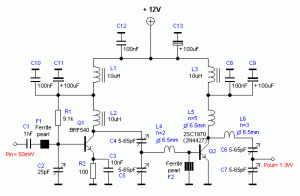Two button Digital Lock

Now here’s a digital lock unlike any other, as it has only two buttons instead of the usual numeric keypad. The way it works is as simple as its keypad. Button S1 is used to enter the digits of the secret code in a pulsed fashion-i.e. the number of times you press the but-ton is determined by the digit to be entered. A dial telephone uses the same type of coding (now maybe there’s an idea?). Press four times for a 4, nine times for a 9, etc. Pressing button S2 indicates the end of a digit. Project Image : Two-button Digital Lock Project Image For example, to enter the code 4105, press S1 four times, then press S2, then S1 once, S2 once, then without pressing S1 at all, press S2 again, then finally S1 five times and S2 once to finish. If the code is correct, the green LED D1 lights for 2 seconds and the relay is energised for 2 seconds. If the code is wrong, the red LED D2 lights for 2 seconds, and the relay is not energised. To change the code, fit a jumper to...














